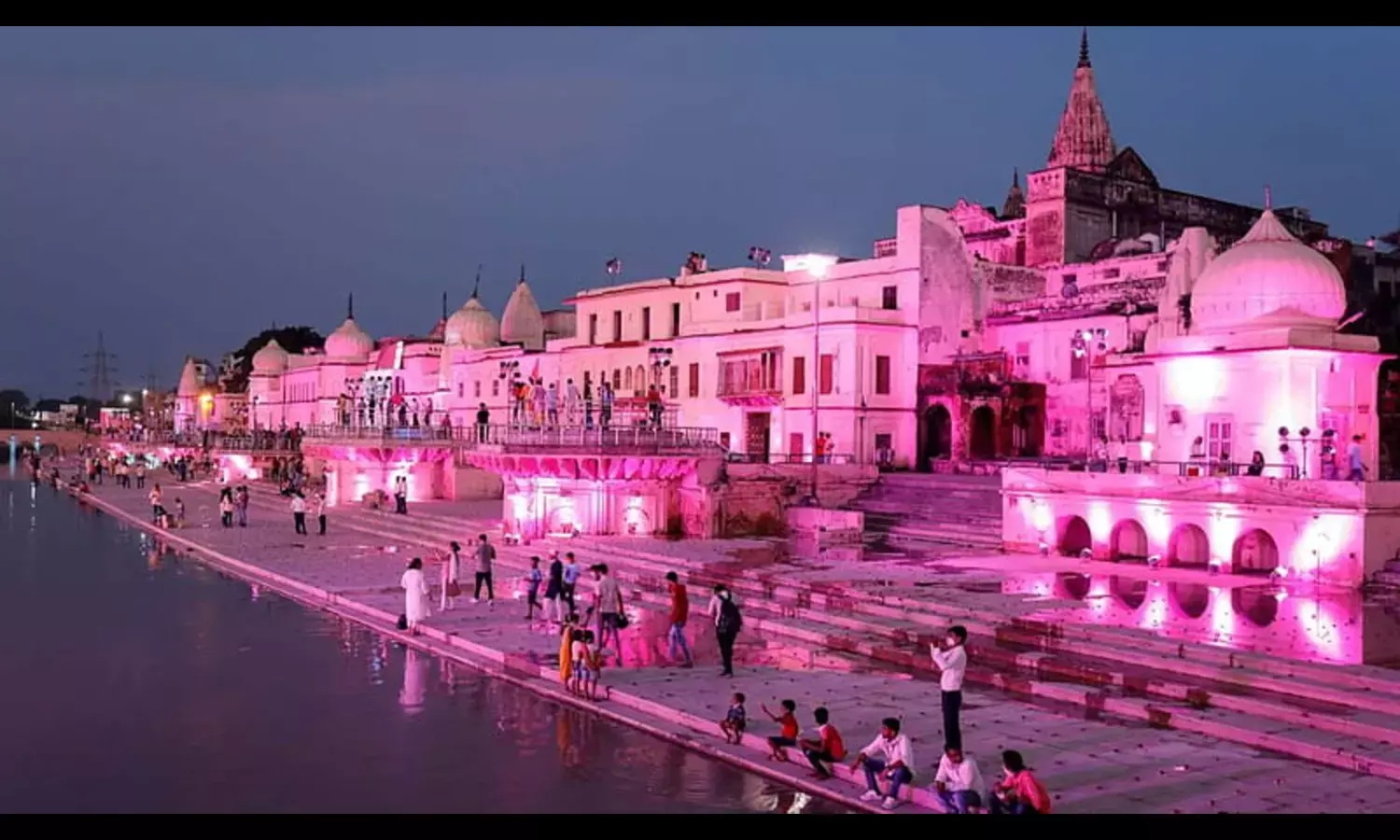6 Top Places to Visit in Ayodhya in 2024
On the eve of the inauguration of Shree Ram Mandir in Ayodhya, here is a list of places to visit in the holy city.

One of the most religious places in India is the vibrant city of Ayodhya. The birthplace of Lord Ram, according to Hindu mythology, holds great spiritual significance among Hindu devotees. Every year, the city is visited by thousands of pilgrims all year round. However, the city experienced a surge in tourism since the landmark judgment of the Honorable Supreme Court of India in 2019. The judgment gave a go-ahead to the building of the temple on the alleged Ram Janm Bhumi. The project was given to the Shri Ram Janmabhoomi Teerth Kshetra, which is a trust established by the Indian government to supervise the temple's construction.
The year 2024 is another milestone year in the resurrection of Shri Ram Mandir in Ayodhya, Uttar Pradesh. The temple will be inaugurated on January 24, 2024, by Prime Minister Narendra Modi. The temple is expected to be completed in February 2024.
Here is a list of all the places to visit in the holy city of Ayodhya in 2024.
Ram Katha Park
The Ram Katha Park houses open-air theatres and well-kept lawns. It is a popular spot if you want to enjoy devotional programs, religious events, poetry, and Ram Katha recital sessions.
In the free time, when there are no events scheduled, the park serves as a playing ground for children or a relaxation area for seniors.
Hanuman Garhi
The Hanuman Garhi temple, located near Sai Nagar, has been dedicated to Lord Hanuman and has a history dating back to the 10th century. Hanuman Garhi, which is among the city's most famous temples, is usually frequented before visiting the Ram Mandir in Ayodhya. According to the legend, it is believed that Lord Hanuman resided within the temple area, diligently guarding Ayodhya from afar. The main entrance of the temple can be reached by climbing a 76-step stairway on the hillside. Atop a hill, positioned in such a way to have a clear view of the mountains in the vicinity, stands a small statue of Hanuman, measuring only 6 inches in height. The temple compound comprises an internal cave where numerous statues of Lord Hanuman and his mother, Maa Anjani, are housed. Hundreds of worshippers gather at Hanuman Garhi to celebrate the birth of Lord Ram and Lord Hanuman.
Mani Parbat
According to the Ramayana, in order to heal Lord Lakshman, who had been injured by Meghnath, Lord Hanuman uprooted an entire mountain that contained the Sanjeevani Booti. A small portion of the Parbat, or mountain, that he was holding in his hand, now known as Mani Parbat in Ayodhya, fell to the ground.
Many shrines can be found near Mani Parbat. It is also believed that Lord Buddha spent six years in Ayodhya and preached the Law of Dharma from the Mani Parbat.
Treta Ka Thakur
One of the most famous temples in Ayodhya is called Treta ka Thakur, and it is devoted to Lord Ram, the Treta Yug's ruler. Built 300 years earlier by the Kullu ruler, the temple was reconstructed in 1784 AD by the Maratha queen Ahilyabai Holkar. Due to the fact that Lord Ram conducted the "Ashwadmedha Yagya" ceremony here to remember his victory over Ravana, the temple has significant religious significance.
The temple of Treta Ke Thakur is a great example of the Nagara architectural style. It also includes the infamous traditional ‘shikhara.’ The deities who have their idols inside the temple are Lord Ram, Lord Bharat, Lord Shatrughan, Lord Hanuman, Goddess Sita, Lord Lakshman, and Sage Vashishtha.
Sita Ki Rasoi
It is believed that Sita's Kitchen, situated in Rajkot, Ayodhya, on the northwest side of the Ram Janmabhoomi, is an ancient culinary space utilized by the goddess Sita herself. The temple, which was built close to the Ram Janmabhoomi, is now a sacred place with numerous showcased objects. Sita Ki Rasoi, a kitchen located underground, is one of the two kitchens that are named after Sita.
Gulab Bari
The Gulab Bari, also called the Garden of Roses, is located in Vaidehi Nagar. It is the final resting place of Nawab Shuja-ud-Daula, the third Nawab of Faizabad (Oudh or Awadh), as well as his parents. Currently protected as a component of the nation's history, Gulab Bari is listed under the Ancient Monuments and Archaeological Sites and Remains Act.
Along with these places, there are many other places, such as Bahu Begum ka Maqbara, Nageshwarnath Temple, Ram ki Paidi, Guptar Ghat, and many other places.
The best time to visit Ayodhya is from October to March. The weather during this time is pleasant and suitable for exploring the city’s historical and religious sites.
Tourists and pilgrims also plan their visits around festivals like Diwali or Ram Navami, when Ayodhya is beautifully decorated, and celebrate these occasions with great fervor. Ayodhya is a great city and is rich in culture and spirituality. Any time one visits the city, they will be able to experience its charm.
Image Source: Google


